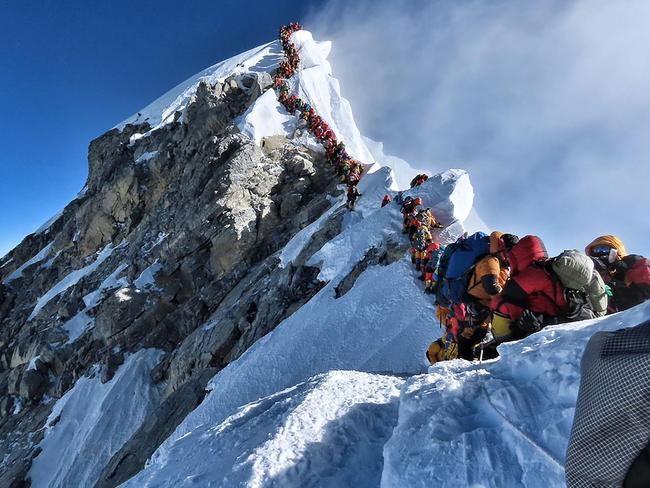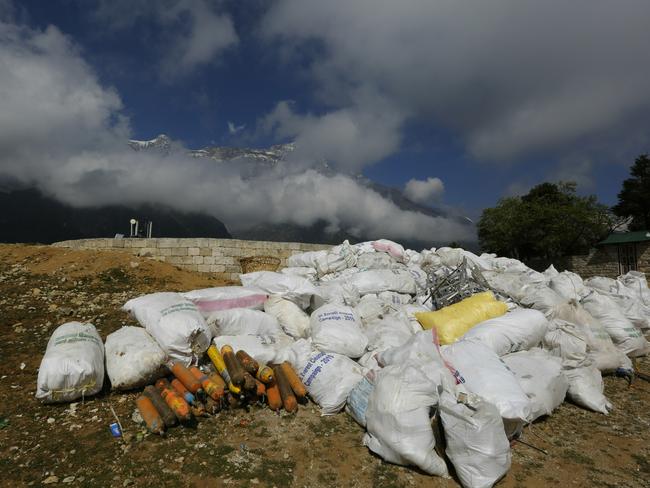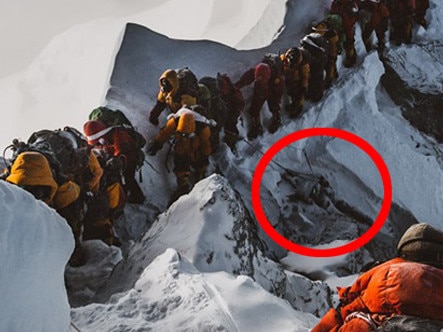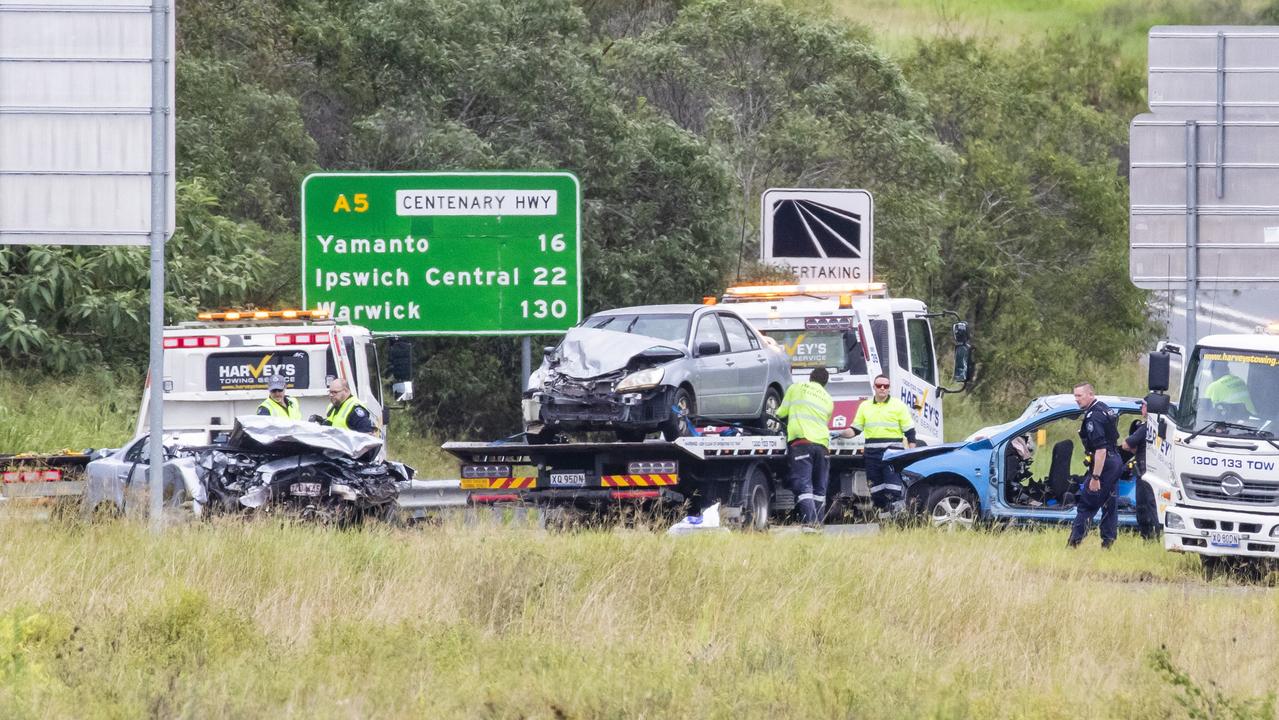‘Close the mountain’: Mt Everest has become ‘the epitome of arrogance’
It was once a great feat, but climbing Mount Everest has become “the epitome of self-serving arrogance” and it should be shut down, Angela Mollard writes.
Travel Incidents
Don't miss out on the headlines from Travel Incidents. Followed categories will be added to My News.
You have to wonder what celebrated climber Sir Edmund Hillary would make of this week’s images from Mt Everest.
A traffic jam of wannabes trying to make it to the summit. Dead bodies on the track, 11 having lost their lives in 10 days. Oxygen-deprived climbers jostling with each other for their place in the queue. Others being dragged down as life drains from their bodies.
It’s a ghastly glimpse of humanity at its worst and one I’m sure would horrify the humble man who first pitted himself against the tallest mountain in the world.
In 2003, 50 years after he climbed Everest, the climber told me the mountain needed a break.
“Human life,” he said, “is far more important than just getting to the top of a mountain”.
Sixteen years later we need to close the damn mountain. Pull out the ladders over the Khumbu Icefall. Put up a stop sign. Forbid anyone walking past Base Camp and broadcast to the world that Chomolungma, what the Tibetans call “Goddess Mother of Mountains”, can now rest both in majesty and peace.
I deplore the harnessing of nature and I’m not advocating a gate at the base of Everest to save these idiots from themselves. Rather, having climbed in the Himalayas, I believe the mountain should be honoured from afar and saved from becoming a squalid human graveyard. Climbing Everest is not sport or “living your best life”; it’s become the epitome of heartless, self-serving arrogance.


Climbing Everest is no longer a test of human endeavour for the world’s most experienced mountaineers. Instead, it has become a grotesque theme park for cashed-up, kitted-up corporates and thrillseekers who see it as a notch on their belt and a post on their Instagram.
The mountain is making monsters out of all of us: the middle-class adventure seekers who clearly think it requires little more training than a Saturday fun run; the companies responsible for this ugly commercialisation of risk; the voyeurs who click on the ever more disturbing photographs and video that pop up each May as the perilously short climbing season gets underway.
RELATED: Disturbing story behind tragic Mount Everest photo
RELATED: What is causing climbers to die
Honestly, if we’re trying to rid our oceans of plastic then we’re equally responsible for clearing our tallest peaks of both human detritus and the grievous lack of integrity and care that causes it.
As in so much of life, just because we can doesn’t mean we should.
Sure, adrenaline is an intoxicating drug and with enough cash and chutzpah you can turn it into boast-worthy holiday. Drop the credit card, sign the disclaimer, buy the expensive gear and jump in. Equally, those who want to paddle across an ocean, or base jump through the pylons of a bridge or free dive underwater until their lungs collapse, can go for their lives.
Often they do. It’s not for us to police other people’s choices.
Where we should step in is when innocent people or the planet are harmed. When ambition exceeds competency to such an extent that others’ lives are put in jeopardy and the wilderness loses its mystique. Everest is strewn with disused oxygen tanks, broken ladders, frayed ropes and frozen bodies, some of whom belong to the Sherpas who are collateral casualties in Western egotism. As Rob Hall, leader of the ill-fated 1996 expedition, once said: “Human beings simply aren’t built to function at the cruising altitude of a 747.”
The argument has long been that the climbing fees help men earn money for their families and support the Nepalese Government. But what of the child who has lost his father on the peak because some arrogant CEO thought it’d make a great day out? The Himalayas is more than just one tiny platform on the top of the world, it’s an endless panorama of extraordinary beauty.
The Government could still earn millions from those wanting to see the region, just not ascend it.
When I spent 16 days walking from Lukla to Base Camp in April 2008 I saw the hoards preparing for their ascent. They were tense and joyless, nervous about the weather, competing expeditions and their own endurance. I doubt many of them noticed the stunning ice-blue streams, the prayer flags fluttering in the breeze, the warmth of a mug of ginger tea and the kindness of those who opened their homes.

That’s certainly not what’s been described by adventure filmmaker Elia Saikaly whose series of images have shown what’s been happening in Everest this last fortnight.
“I cannot believe what I saw up there,” he wrote. “Death. Carnage. Chaos. Line-ups. Dead bodies on the route and in tents at camp 4. People who I tried to turn back who ended up dying. People being dragged down. Walking over bodies.”
Contrast that with the late Sir Edmund who had no photographs of himself on the peak. He was a mountaineer, not a self-publicist, though he took a snap of the Sherpa, Tenzing Norgay, simply to prove that they’d made it.
“I didn’t worry about getting Tenzing to take a photograph of me,” he pointed out, even though his ascent coincided with the Queen’s coronation and would later see him knighted.
“As far as I knew, he had never taken a photograph before, and the summit of Everest was hardly the place to show him how.”
Oh, that our highest mountain might once again be treated with such respect and humility.

Originally published as ‘Close the mountain’: Mt Everest has become ‘the epitome of arrogance’


